Miami Herald: “Innovative zoning rules changed Miami. Now Miami 21 may be in for some big changes”
06/14/2020
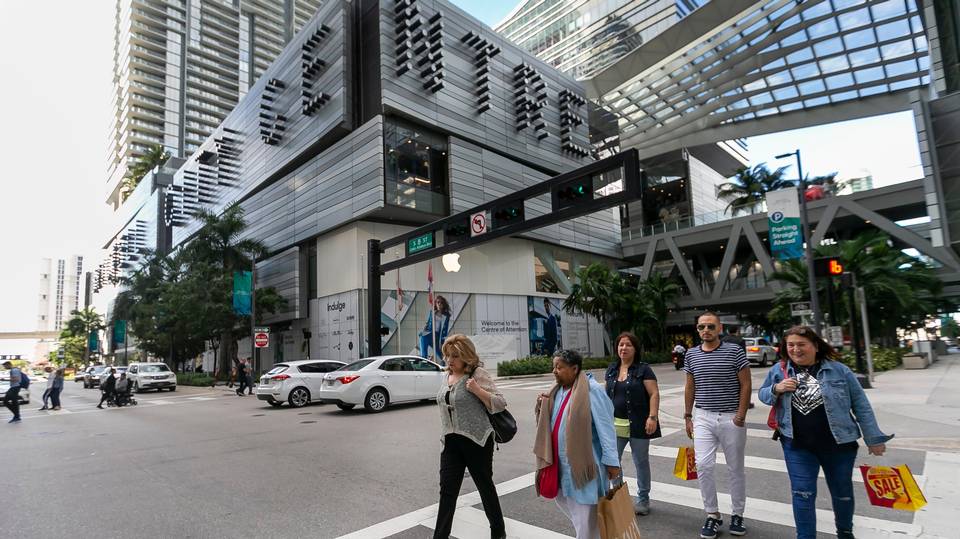
An outside view of Brickell City Centre in Miami, Florida on Tuesday, January 7, 2020. MATIAS J. OCNER MOCNER@MIAMIHERALD.COM
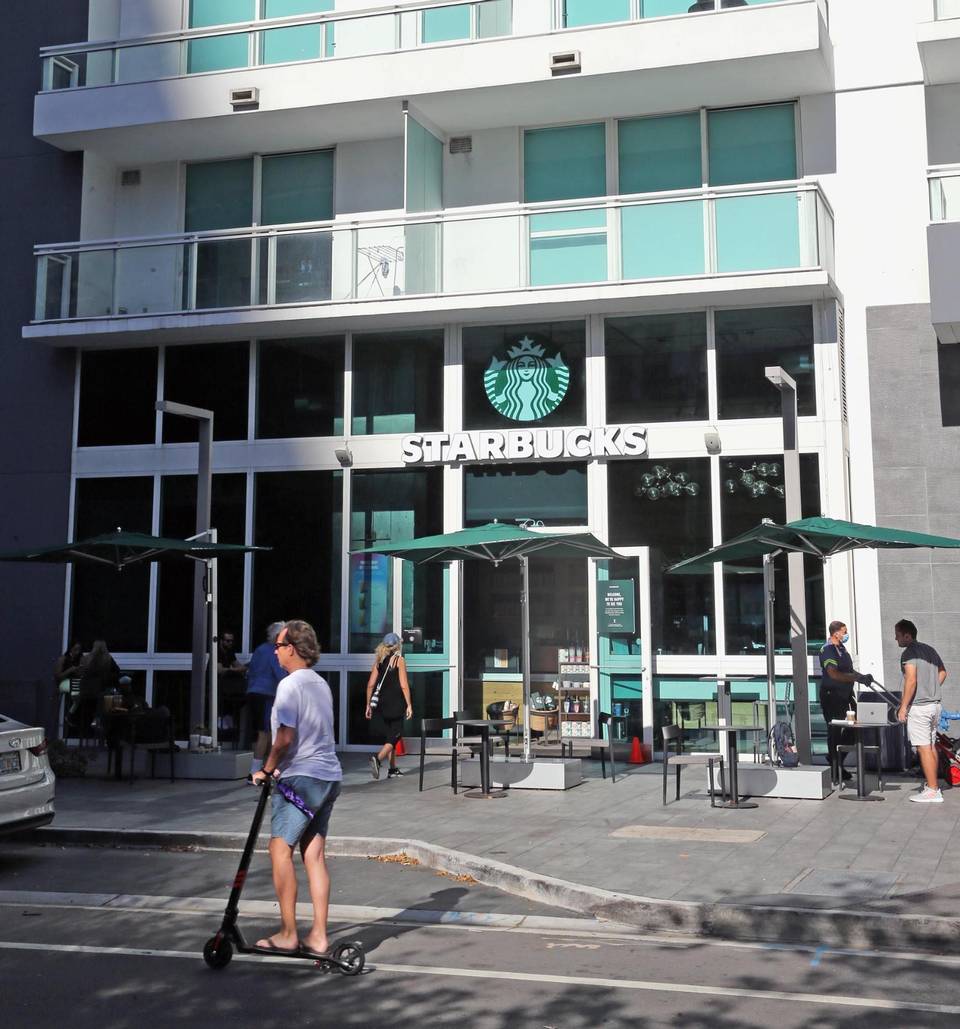
A Starbucks on the ground floor of a residential building in Miami’s Brickell neighborhood opens directly to the sidewalk in pedestrian-friendly fashion under a template set by the city’s 10-year-old Miami 21 zoning code. CHARLES TRAINOR JR CTRAINOR@MIAMIHERALD.COM
Although the Miami 21 code has been amended several times, the city has not conducted the sort of thorough assessment that its designers at the Miami planning firm Duany Plater-Zyberk envisioned would occur every few years to adapt to a changing world.
“The city has evolved tremendously since the inception of Miami 21,” Miami City Manager Art Noriega told the task force during the inaugural meeting, which was conducted virtually. “This is something we probably should have started some time back.”
Under a resolution adopted by the Miami commission, the task force will meet at least monthly and issue a report with recommended revisions or additions by December to city commissioners.
The questions the task force should explore, say its members and Miami 21 principal author Elizabeth Plater-Zyberk, take on added dimensions in the ongoing COVID-19 pandemic.
One consideration: should the prospect of subsequent waves of infection or new epidemics justify requirements for greater setbacks and open space at the street level around buildings? That requirement would allow for maximum air circulation and space for social distancing, including separated cafe tables and wider sidewalks, they said.
Another factor: Will decreased use of formal offices, or a greater need for working from home, produce a greater need for live-work housing that combines residential space with businesses or office space?
Even questions over the continued desirability of increased urban density to foster city life should be on the table after coronavirus spread rapidly in close urban quarters like New York City, they say.
“Wider sidewalks and fewer or narrower traffic lanes, wellness and equity questions, and rethinking of public space — the amount of it, the dimensions of it — would certainly be appropriate in light of world health,” said Plater-Zyberk. She stressed she has not kept up with the code’s use closely and is not involved in the revision effort.
When it comes to affordable housing, there’s only so much a zoning code can do to spur affordable housing short of requiring it — something elected officials have resisted and may now be barred by a new state statute, experts say. Plater-Zyberk said Miami 21 could nonetheless provide greater incentives than it does now to developers. It could offer more capacity to build in exchange for strict commitments to including affordable or workforce housing in projects — though she warned those must be carefully calibrated.
But she said Miami 21’s basic precepts have more than proven themselves.
To promote walkability, activity and good urban design, the code bars visible parking or loading areas, requiring those be concealed behind screens or “liners” consisting of apartments, offices and shops. It requires “habitable space” at street level and lots of clear glass at sidewalk level, plus working doors and entryways, to make walking easy and alluring.
The best SAPs, meanwhile, allowed developers and planners flexibility to arrange new buildings in innovative, cohesive ways that a strict adherence to Miami 21 would not permit. But Plater-Zyberk said city planners may have interpreted some SAP rules too liberally.
One goal of SAPs is to allow planners and developers to depart from Miami 21 rules to amass density and height in sections of the property to create variety and open spaces across the site. Instead, at times, developers were allowed to increase density across the board in exchange for providing open spaces and other public benefits, she said.
That could be fixed with a tweak of the rules, she said.
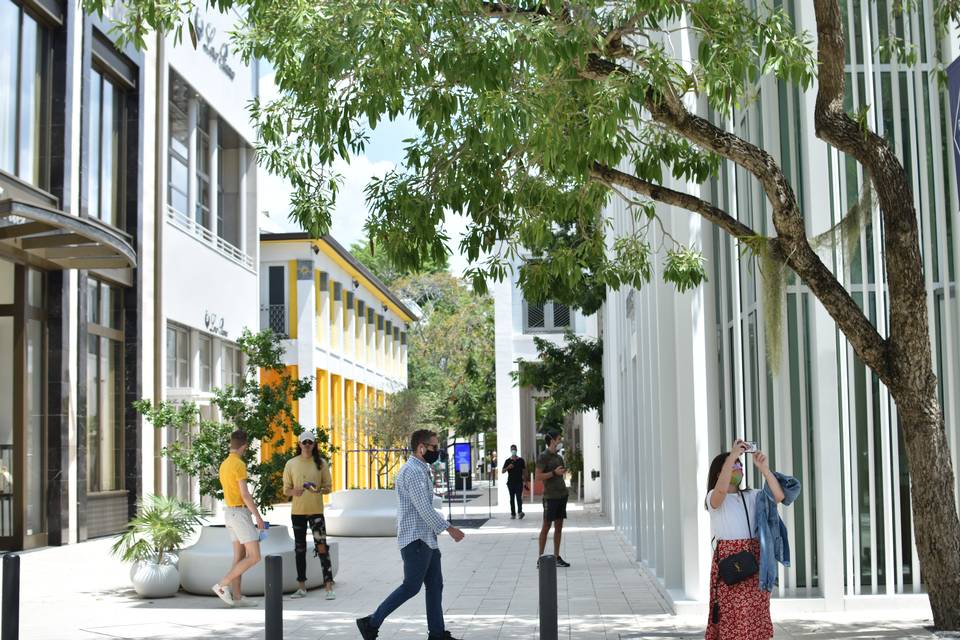
Visitors stroll along Paseo Ponti on the reopening day of the Miami Design District on Wednesday, May 20. MIAMI DESIGN DISTRICT
Miami 21, proposed in 2005 by then-Miami Mayor Manny Diaz, was shaped through years of intense public meetings, contested hearings and some determined opposition. It finally was approved by the Miami commission in 2009, just as development ground to a virtual halt amid a deep world recession.
The new code represented a sharp departure from its predecessor, which strictly separated uses like housing, office and commercial — a suburban concept that critics say led to dead streets, a dying downtown and commercial districts without the foot traffic necessary to sustain them. It also produced jarring contrasts like massive parking garages, ramps and blank walls on important streets, and towers looming over single family homes. The complex and often ambiguous rules also lent themselves to manipulation by developers and their attorneys, critics charged.
When construction finally restarted post-Recession with a vengeance, it was on the new, urban template of Miami 21. It’s been in place during one of the most extensive and long-lasting waves of development in city history.
A variant of what’s known as a form-based code, Miami 21 regulates the shape of buildings and how they meet the street to create lively urban places through clear diagrams. The code won awards and attention across the country. Some other cities adopted similar strategies, most notably Denver, today widely regarded as another example of a revitalized pedestrian-friendly urban center.
A key advance wrought by Miami 21 was its fostering of mixed uses within a single building or project in dense urban areas. Unlike the strict separation under the old model that requires driving from one place to the other, mixing uses puts living, working, shopping and recreation all within a close, walkable environment.
That Miami 21 model helped transform Brickell from a district of sterile sidewalks to a magnet for young professionals, cafes and restaurants and workplaces that would have been difficult, if not illegal, to achieve under the previous code. Once rundown areas such as Edgewater and Biscayne Boulevard were overhauled through redevelopment on the Miami 21 template into sought-after neighborhoods.
“People started noticing right away the fact that streets were becoming nicer,” Plater-Zyberk recalled. “I think there are a lot of obvious good impacts, from the low-rise bank on the corner that before would have put a parking lot out in front, to a more pedestrian-friendly streetscape.”
Planning consultant and urban designer Juan Mullerat, a member of the current Miami 21 task force, said much of the code’s success lay in advancing sophisticated goals in simple terms.
“It’s created better walkable human architecture. It has been able to humanize the public realm,” Mullerat, who worked for a year at Plater-Zyberk’s firm while the code was being developed, said. “The biggest strength of Miami 21 is its ability to put in simple terms some very complicated planning concepts. At the end of the day, it’s an approachable code.”
Miami 21 also embraced some innovative ideas. It promotes preservation of historic buildings and places by allowing their owners to sell unused building rights to developers in high-density districts like Edgewater or Brickell, while plowing the proceeds into renovations. That transfer of development rights program gave new life to the iconic Vagabond and other historic motels in the MiMo district along Biscayne Boulevard in the city’s Upper East Side.
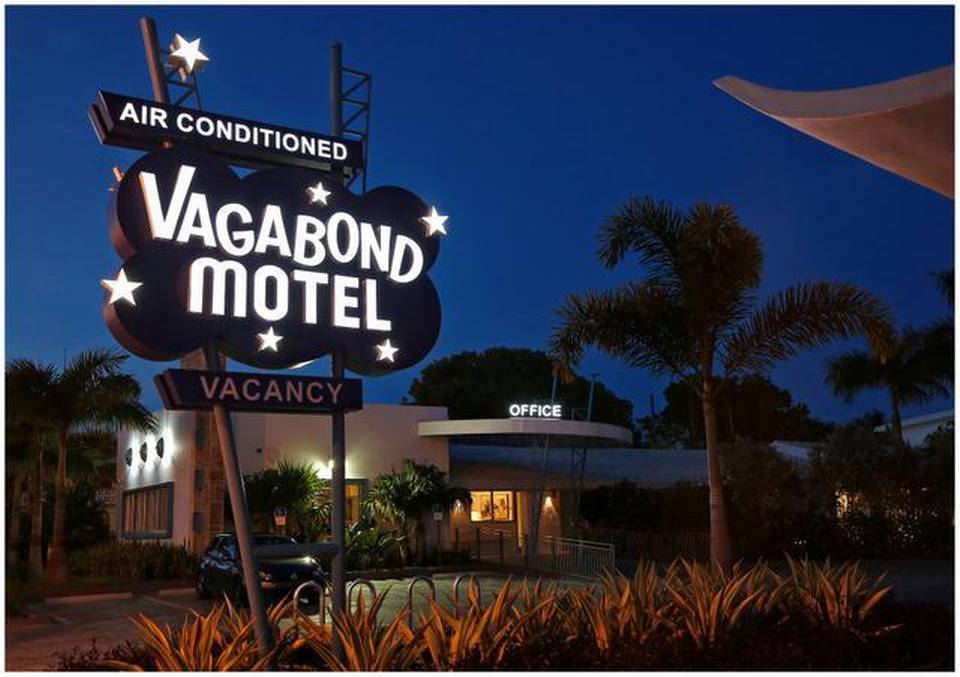
The renovated Vagabond Motel is now open for guests. CARL JUSTE MIAMI HERALD STAFF
The Related Group’s Icon Bay condo tower in Miami’s Edgewater neighborhood includes a public park on Biscayne Bay built under the city’s Miami 21 zoning code. ROBIN HILL COURTESY THE RELATED GROUP
Echoing others, Rosso also said the task force should explore further easing minimum parking requirements, which critics say increase construction and housing costs and contribute to traffic congestion. Eliminating those requirements, though, isn’t feasible without transit improvements that a zoning code can’t mandate, he said.
“We need to improve public transportation to get rid of the parking,” said Rosso, who added Related is communicating with city planners to offer input on Miami 21.
The parking requirements also play into one gaping area where numerous experts and developers say Miami 21 has been ineffective: Encouraging needed, affordable and modestly scaled infill housing in neighborhoods like Little Havana. Though it’s dotted with scores of vacant lots, Miami 21 regulations make it difficult if not impossible for property owners to build the kind of small apartment buildings that could make a real dent in the city’s housing crisis, the critics say.
That’s because a typical, narrow city lot can’t easily accommodate required on-site parking and car access while hewing to low-density zoning in some residential areas. As a result, critics note, very little has been built in those neighborhoods under Miami 21.
“Essentially they are undevelopable,” Mullerat said.
The lack of that kind of modestly scaled neighborhood development, called the “missing middle” — that is, a homey scale between high-rise projects and single family homes that’s the backbone of many traditional cities — is a national problem, experts say. That’s in part because banks and the development industry are geared to more-profitable big development, they said.
But tweaking the rules to make it easier to develop those lots would spread prosperity by allowing small entrepreneurs to build, Mullerat said. What any revisions to Miami 21 must avoid, he said, is giving developers more capacity to develop without ensuring real community improvements. That’s something he said has happened in neighborhoods like Coconut Grove, where the city has allowed construction of oversized homes that erase local character and, in the case of the historically black West Grove section, push longtime residents out.
“We have tools at our disposal as planners. Any change in the zoning needs to be equitable and it needs to be community driven,” Mullerat said. “A rezoning affects the surrounding property values, the living conditions and the identity of a whole neighborhood.”
Some of those tensions between big development and its community impact reared up in the first task force hearing, intended as an organizational meeting.
The three land-use attorneys appointed to the panel did not participate in the meeting at the suggestion of the city attorney’s office amid questions over whether their inclusion on the task force might constitute a prohibited conflict of interest under state law. All three are registered to act as lobbyists for dozens of developers seeking waivers and city zoning and development approvals under Miami 21.
The city is awaiting rulings from the Miami-Dade County and Florida ethics commissions, assistant city attorney Amber Ketterer said. A complaint from a city resident triggered a Miami-Dade review, according to a June 4 email to the city from ethics commission executive director Jose Arrojo.
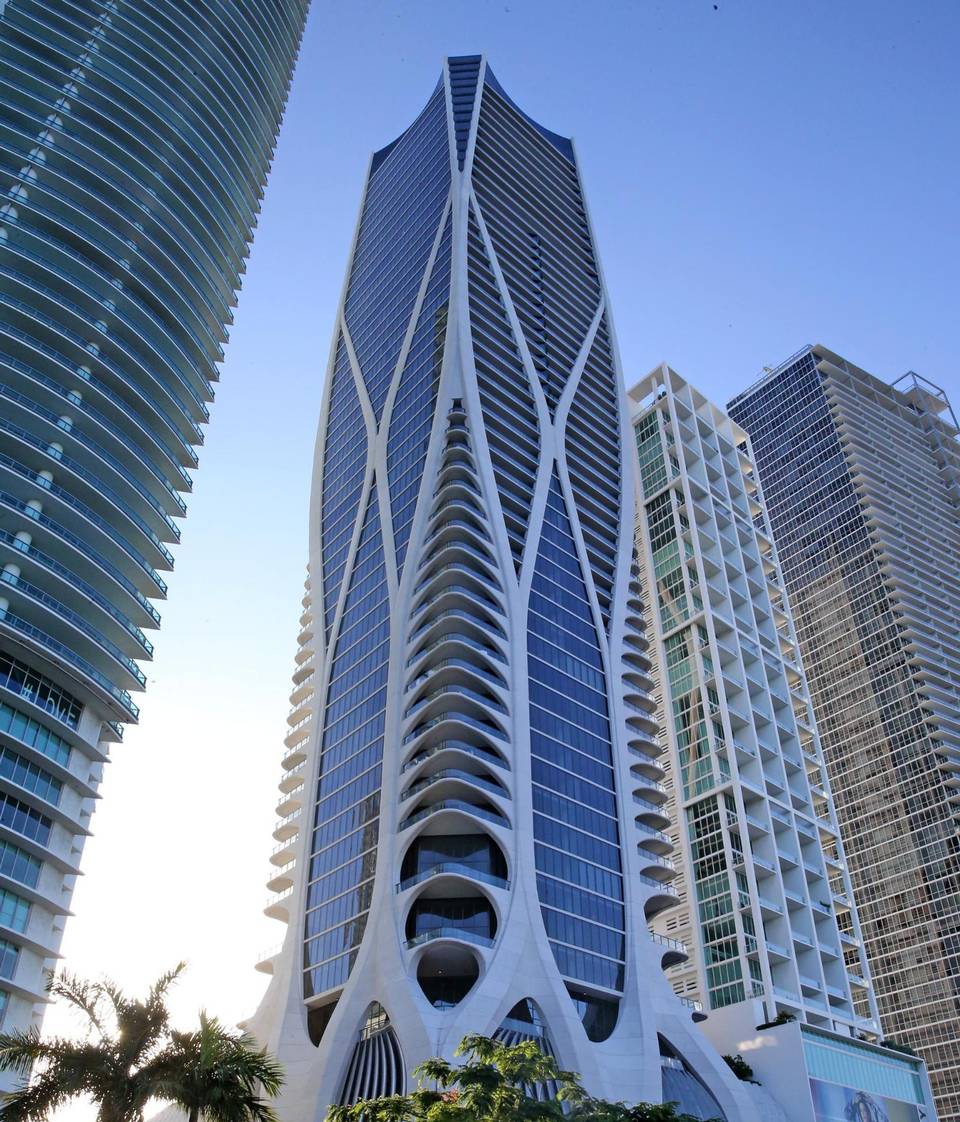
The 1000 Museum luxury condo tower on Biscayne Boulevard in downtown Miami was designed by late famed architect Zaha Hadid under the city’s Miami 21 zoning code. CHARLES TRAINOR JR CTRAINOR@MIAMIHERALD.COM